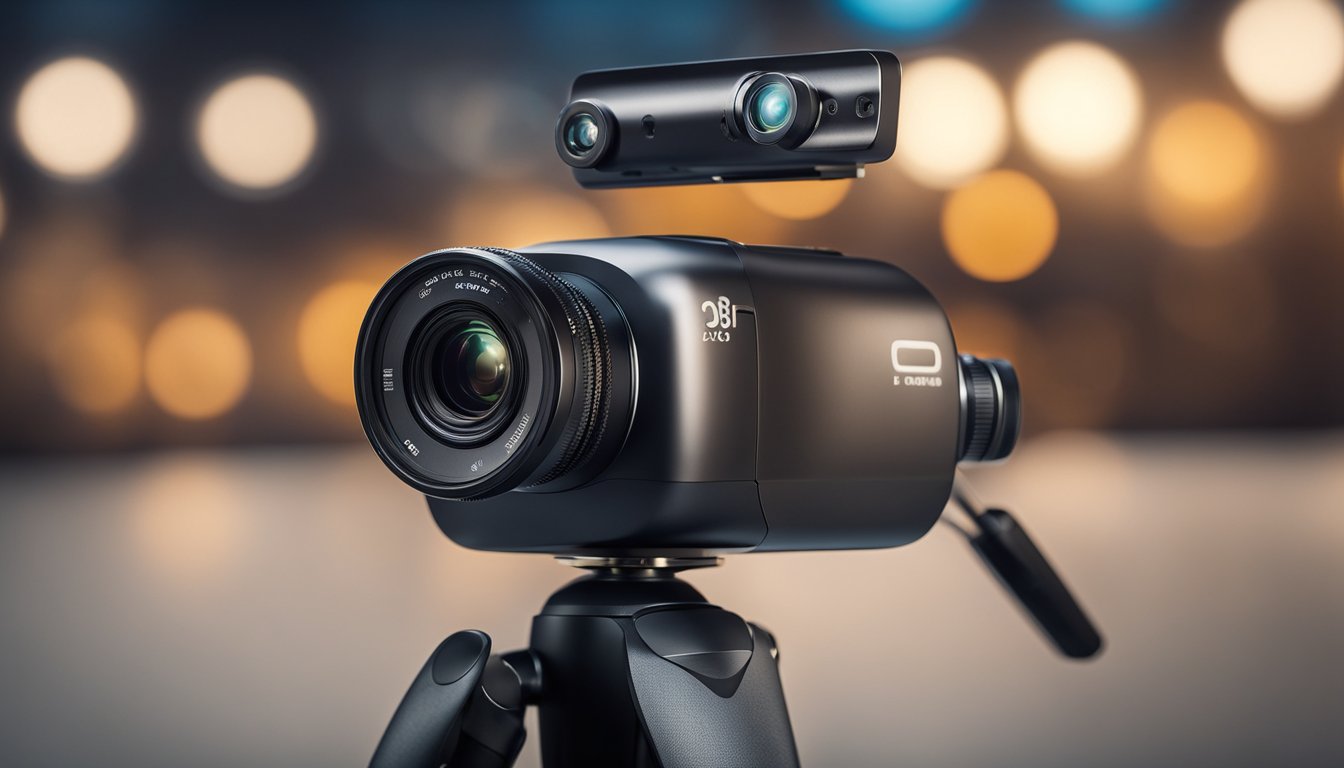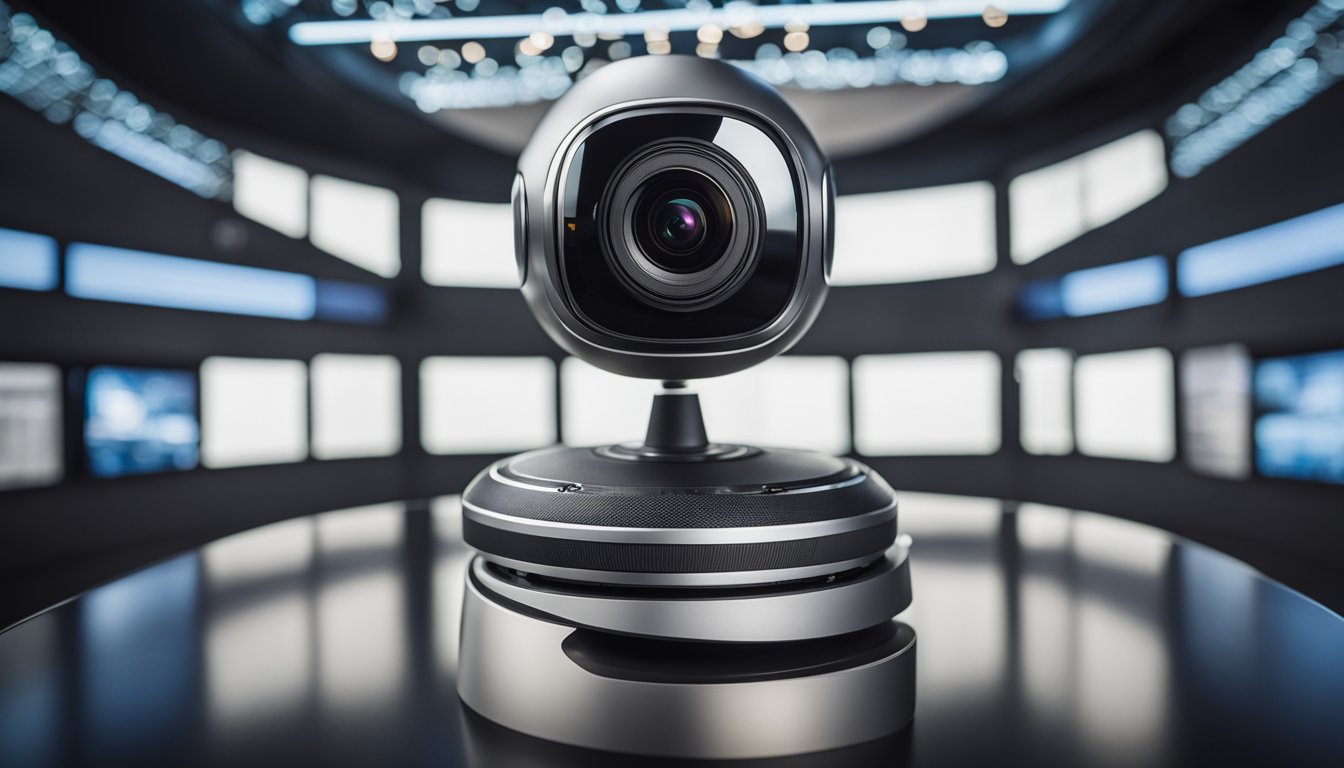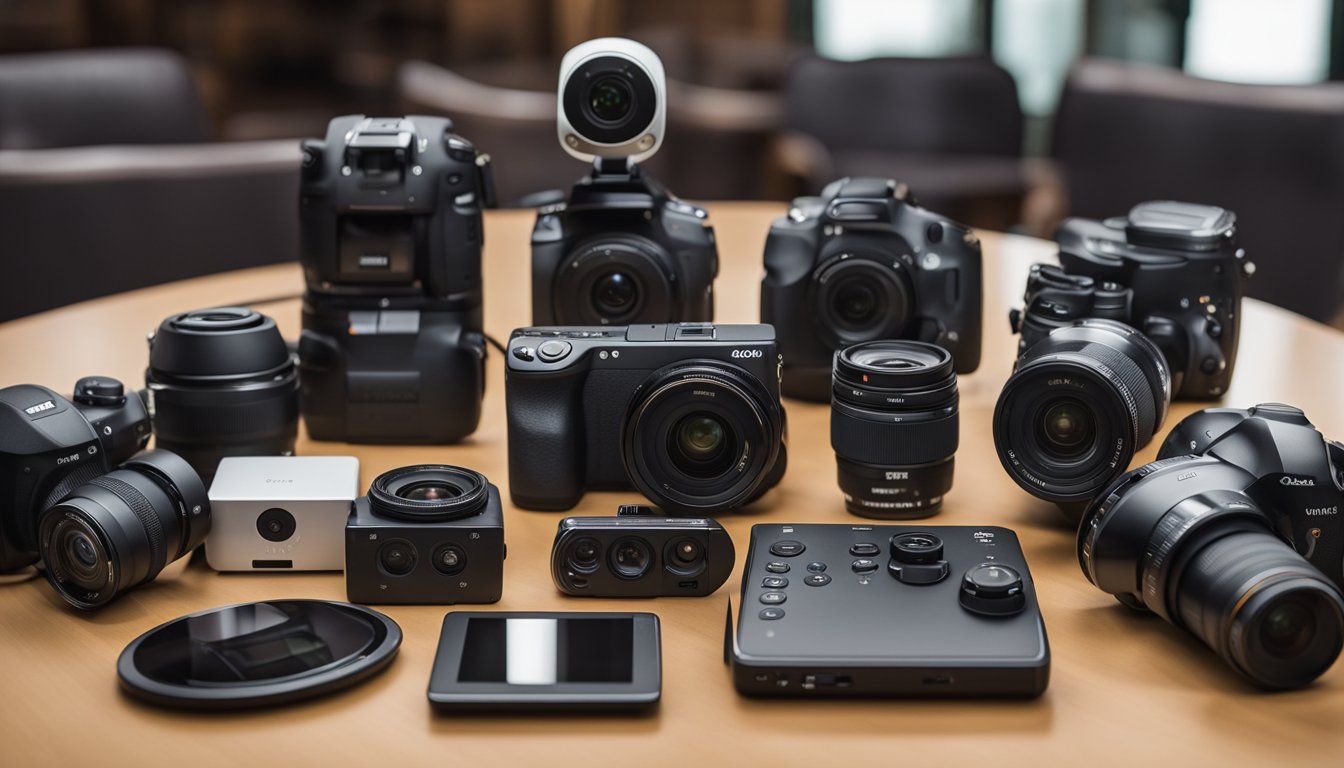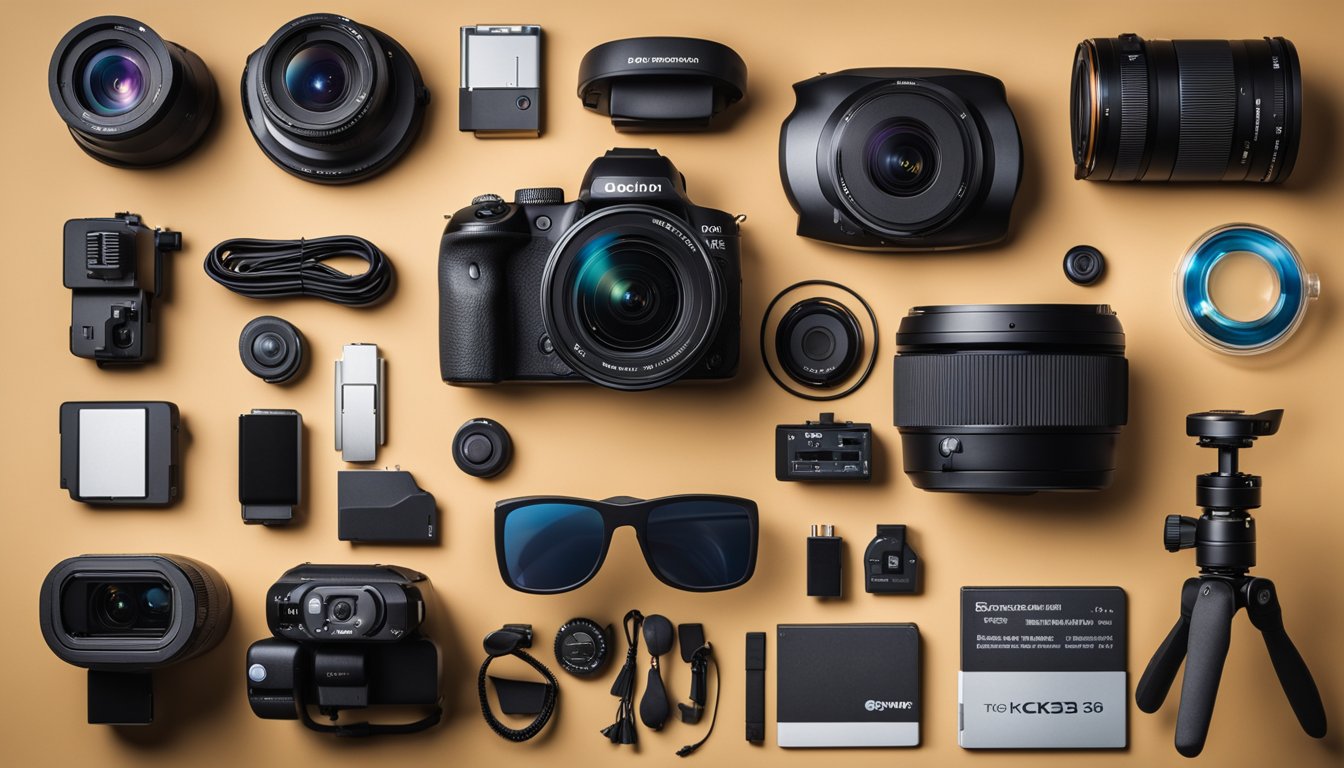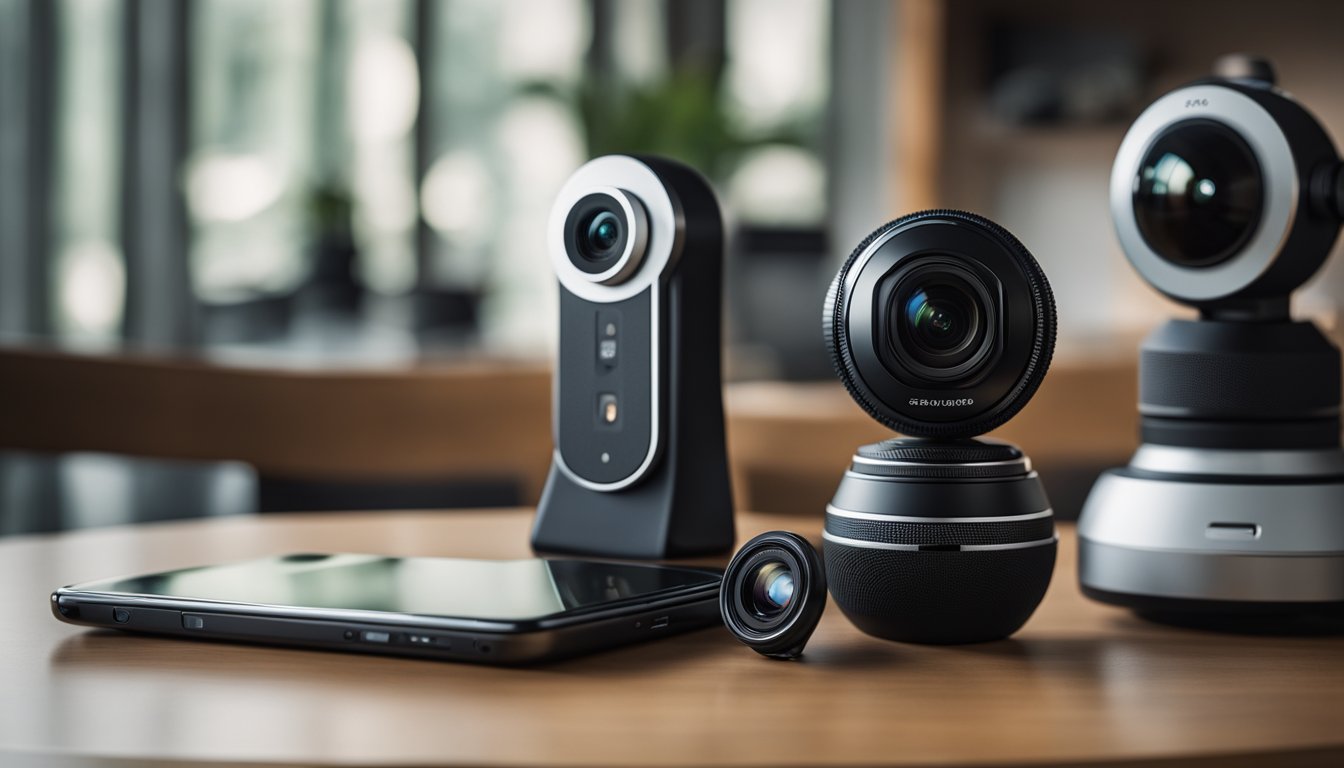If you’re interested in photography and videography, you may have heard about 360 cameras. These cameras are becoming increasingly popular as they allow you to capture immersive photos and videos that can be viewed from any angle. But what exactly is a 360 camera and how does it work?
A 360 camera is a device that captures a 360-degree view of the surrounding environment. It uses multiple lenses to capture images from different angles and then stitches them together to create a seamless 360-degree image. This allows the viewer to see the entire environment as if they were physically present in the location where the image was taken. 360 cameras are often used for capturing panoramic landscapes, virtual tours of real estate properties, and immersive videos for virtual reality experiences.
Key Takeaways
- A 360 camera captures a 360-degree view of the surrounding environment using multiple lenses.
- 360 cameras are used for capturing panoramic landscapes, virtual tours of real estate properties, and immersive videos for virtual reality experiences.
- 360 cameras allow you to create immersive content that can be viewed from any angle.
Understanding 360 Cameras
https://www.youtube.com/watch?v=WtAiEeZiYfs&embed=true
If you’re new to the world of 360 cameras, you might be wondering what they are and how they work. In this section, we’ll explain the basics of 360 cameras, including the types of 360 cameras available and how they work.
Types of 360 Cameras
There are two main types of 360 cameras: single-lens and dual-lens. Single-lens 360 cameras have a single lens that captures a full 360-degree view. Dual-lens 360 cameras have two lenses that capture a 180-degree view each, which are then stitched together to create a full 360-degree view.
Single-lens 360 cameras are generally more affordable and easier to use, but they may not capture as much detail as dual-lens cameras. Dual-lens cameras, on the other hand, are more expensive and may require more technical knowledge to use, but they generally produce higher quality images.

How 360 Cameras Work
360 cameras work by using multiple lenses and sensors to capture a full 360-degree view. The lenses capture images from all angles, while the sensors collect data about the position and orientation of the camera.
Once the images and data are captured, they are stitched together using specialized software to create a seamless 360-degree view. This process can be time-consuming and requires a powerful computer, but there are many software options available that make it easier for beginners to get started.
Another important feature of 360 cameras is image stabilization. Because 360 cameras capture images from all angles, it’s important to have stable footage to avoid making viewers dizzy or nauseous. Many 360 cameras come with built-in image stabilization features, but it’s important to check the specifications before making a purchase.
Overall, 360 cameras are a fun and exciting way to capture immersive photos and videos. Whether you’re a professional photographer or just looking to capture memories with friends and family, a 360 camera can add a new dimension to your photography.
Key Features of 360 Cameras
« Fusion 360 CAM for Beginners: A Quick Guide to Getting Started
How to Install Camera 360 in Your Laptop: A Step-by-Step Guide »
360 cameras have become increasingly popular in recent years, thanks to their ability to capture immersive and interactive content. Here are some key features of 360 cameras that you should know about:
Resolution and Image Quality
One of the most important features of a 360 camera is its resolution and image quality. Many 360 cameras can capture video in 4K, 5.7K, or even 8K resolution. Higher resolution means more detail and clarity in your footage, which is especially important when capturing immersive content.
Field of View
Another key feature of a 360 camera is its field of view. A 360 camera captures a full 360-degree view of its surroundings, which means that it can capture everything that’s happening around you. This is especially useful for capturing immersive content like virtual reality experiences or interactive tours.
Stitching Technology
One of the most important technical aspects of a 360 camera is its stitching technology. A 360 camera uses multiple lenses to capture a full 360-degree view of its surroundings, but the resulting footage needs to be stitched together to create a seamless panoramic image. Some cameras have better stitching technology than others, which can affect the quality of the final image.
Overall, 360 cameras are a powerful tool for capturing immersive and interactive content. With their high resolution, wide field of view, and advanced stitching technology, they are ideal for creating virtual reality experiences, interactive tours, and more.
Popular 360 Camera Models
If you are looking to buy a 360 camera, you have plenty of options to choose from. Here are some of the most popular 360 camera models available in the market today.
GoPro Max and Insta360 Series
GoPro Max and Insta360 are two of the most popular 360 camera brands in the market. Both brands offer a range of models that cater to different needs and budgets. The GoPro Max is known for its rugged design and excellent image stabilization, making it a great option for adventure photographers. On the other hand, the Insta360 series is known for its compact size and user-friendly interface, making it a great option for beginners.
Some of the popular models in the Insta360 series include the Insta360 One R, Insta360 X3, and Insta360 One X2. These cameras offer features like 5.7K video, 360-degree live streaming, and AI-powered editing tools. The GoPro Max, on the other hand, offers features like 360-degree video, 16.6 MP photos, and HyperSmooth 2.0 stabilization.
Ricoh Theta Lineup
Ricoh Theta is another popular 360 camera brand that offers a range of models to choose from. The Ricoh Theta Z1 is the flagship model of the lineup and offers features like 23 MP photos, 4K video, and RAW image capture. It also comes with a built-in OLED display and offers manual control options.
The Ricoh Theta X, on the other hand, is a more affordable option that offers features like 4K video, 14 MP photos, and a user-friendly interface. It also comes with a range of shooting modes like time-lapse, HDR, and interval shooting.
Overall, whether you are a professional photographer or a beginner, there is a 360 camera out there that will meet your needs and budget. Be sure to do your research and choose a camera that offers the features that are most important to you.
Capturing 360 Photos and Videos
https://www.youtube.com/watch?v=mnZ2uZYMEw8&embed=true
Capturing 360-degree photos and videos is an exciting way to create immersive content that can be viewed from all angles. With a 360-degree camera, you can capture everything around you in a single shot. Here are some tips to help you get the best results:
Techniques for Best Results
-
Find a good location: When capturing 360-degree photos and videos, it’s important to find a location that offers a wide field of view. This will allow you to capture as much of the environment as possible. Consider shooting in an open area, such as a park or beach, or in a large indoor space like a museum or art gallery.
-
Use a tripod or stabilizer: To get the best results, it’s important to keep your camera steady while shooting. A tripod or stabilizer can help you achieve this. It will also help you avoid any unwanted movement or shaking that can ruin your footage.
-
Experiment with different angles: With a 360-degree camera, you have the freedom to capture your subject from any angle. Experiment with different angles to find the one that works best for your content. You can also try shooting from a higher or lower vantage point to add more depth to your footage.
-
Pay attention to lighting: Lighting is important in any type of photography or videography. When shooting with a 360-degree camera, pay attention to the lighting conditions in your environment. Avoid shooting in harsh or direct sunlight, as this can create unwanted shadows or glare.
Creative Applications
360-degree cameras can be used in a variety of creative ways. Here are some ideas to get you started:
-
Virtual tours: Use your 360-degree camera to create virtual tours of your home, office, or business. This is a great way to showcase your space to potential clients or customers.
-
360-degree photos and videos for social media: Share your 360-degree photos and videos on social media platforms like Facebook and Instagram. This is a great way to engage your audience and create immersive content.
-
360-degree product photography: If you run an e-commerce business, consider using a 360-degree camera to capture your products from all angles. This will give your customers a better idea of what they’re buying and can help increase sales.
-
360-degree event coverage: Use your 360-degree camera to capture events like concerts, weddings, and sporting events. This is a great way to create immersive content that allows viewers to feel like they’re part of the action.
In conclusion, capturing 360-degree photos and videos is a fun and creative way to create immersive content. With the right techniques and creative applications, you can create stunning visuals that will engage your audience and leave a lasting impression.
Editing and Software Tools
https://www.youtube.com/watch?v=XgxW7y3Wh4g&embed=true
When it comes to editing 360 camera footage, there are a few key software tools that are essential for creating high-quality content. In this section, we’ll cover the most important tools you’ll need to get started.
Software for Stitching and Editing
The first step in editing your 360 camera footage is stitching together the frames captured by the camera. This process involves taking multiple images and combining them into a single, seamless 360-degree image. There are many software options available for this, including VideoProc, which is a popular choice for both professionals and beginners.
Once your footage is stitched together, you’ll need to edit it to create a final product. There are many different software options available for editing 360-degree video, including PowerDirector and Adobe Premiere Pro. These programs allow you to add effects, transitions, and text to your footage, as well as adjust the color and exposure.
Sharing and Publishing Content
Once you’ve edited your 360 camera footage, you’ll want to share it with the world. There are many different platforms available for sharing and publishing your content, including YouTube, Facebook, and Instagram. These platforms allow you to upload your footage and share it with your audience, as well as track metrics like views and engagement.
When sharing your 360 camera footage, it’s important to keep in mind that not all platforms support 360-degree video. YouTube, for example, allows for 360-degree video uploads, while Facebook and Instagram only support 360-degree photos. It’s important to check the requirements for each platform before uploading your content to ensure that it is compatible.
In conclusion, editing and software tools are essential for creating high-quality 360 camera footage. There are many different options available for stitching and editing your footage, as well as sharing and publishing it on various platforms. With the right tools and a little bit of creativity, you can create stunning 360-degree content that will captivate your audience.
Using 360 Cameras in Various Industries
https://www.youtube.com/watch?v=edZcNxEsdb0&embed=true
360 cameras have become increasingly popular in recent years, and for good reason. They offer a unique way to capture and experience the world around us. In this section, we will explore how 360 cameras are being used in various industries.
Real Estate and Virtual Tours
One of the most popular uses of 360 cameras is in the real estate industry. With a 360 camera, you can create virtual tours of properties, allowing potential buyers to get a better sense of the space without having to physically visit the property. This is especially useful in today’s world, where virtual tours have become more important due to the COVID-19 pandemic.
Virtual tours can be created by stitching together multiple 360 images to create a seamless experience. This allows potential buyers to “walk” through the property and get a better sense of the layout and flow of the space. Additionally, virtual tours can be enhanced with text, images, and even audio to provide additional information about the property.
Action Sports and Adventure
360 cameras are also being used in the action sports and adventure industries. With a 360 camera, you can capture immersive footage of extreme sports like surfing, snowboarding, and skydiving. This allows viewers to experience the action as if they were there themselves.
360 cameras can be mounted on helmets, drones, and other equipment to capture unique perspectives that would be difficult or impossible to capture with traditional cameras. Additionally, 360 cameras are often rugged and waterproof, making them ideal for use in extreme environments.
In conclusion, 360 cameras are being used in a variety of industries, from real estate to action sports. They offer a unique way to capture and experience the world around us, and their popularity is only continuing to grow. Whether you’re looking to create virtual tours or capture extreme sports footage, a 360 camera is a valuable tool to have in your arsenal.
Accessories and Additional Equipment
When it comes to 360 cameras, accessories and additional equipment can greatly enhance your experience. Here are some popular options to consider:
Tripods and Mounts
A sturdy tripod or mount is essential for capturing stable footage with your 360 camera. Look for a tripod or mount with a modular design, which will allow you to easily adjust the height and angle of your camera. Some popular options include the Manfrotto PIXI Mini Tripod and the Joby GorillaPod.
VR Headsets and Viewers
To fully immerse yourself in your 360 content, consider investing in a VR headset or viewer. These devices allow you to view your footage in 3D, giving you a more realistic and engaging experience. Some popular options include the Oculus Quest 2 and the Samsung Gear VR.
Other useful accessories for your 360 camera include waterproof cases, extra batteries, and lens cleaners. With the right equipment, you can take your 360 content to the next level and create stunning, immersive experiences.
360 Cameras vs Traditional Cameras
Comparing Camera Types
When it comes to capturing photos and videos, you have two main camera types to choose from: traditional cameras and 360 cameras. Traditional cameras capture images in 2D, while 360 cameras capture images in a full 360-degree view.
Traditional cameras are the go-to choice for capturing everyday moments and events. They are great for taking high-quality photos and videos from a specific perspective. With traditional cameras, you can adjust the focus, exposure, and other settings to get the perfect shot.
On the other hand, 360 cameras are designed to capture everything around you. They capture a full 360-degree view, allowing you to see everything in the scene. This makes them great for capturing immersive photos and videos that put you right in the middle of the action.
When to Choose a 360 Camera
So when should you choose a 360 camera over a traditional camera? 360 cameras are ideal for capturing immersive experiences, such as travel adventures, concerts, and sporting events. They allow you to capture everything around you, so you can relive the experience as if you were there again.
360 cameras are also great for creating virtual tours and real estate listings. They allow you to capture every angle of a space, giving viewers a complete view of the property.
However, traditional cameras are still the best choice for capturing everyday moments and events. They are more versatile and allow you to capture images from a specific perspective.
In summary, 360 cameras are great for capturing immersive experiences and creating virtual tours, while traditional cameras are better for everyday use. It all depends on your needs and what you want to capture.
Technical Considerations for Buyers
If you are planning to buy a 360 camera, there are some technical considerations that you should keep in mind to make sure you get the best value for your money. Here are some important factors to consider:
Sensor Size and Performance
One of the most important factors to consider when buying a 360 camera is the size and performance of the sensor. A larger sensor size will generally provide better image quality and low light performance. For example, a 1-inch sensor is larger than a 1/2.3-inch sensor, and can capture more light, resulting in better image quality in low light situations. However, a larger sensor also means a larger camera body, which may not be ideal for some users.
Low Light Capabilities
Low light performance is an important consideration for any camera, but it is especially important for 360 cameras, which often need to capture images in low light situations. Look for a camera with a high ISO range, which will allow you to capture images in low light without having to use a flash. Keep in mind that higher ISO settings can result in more noise in your images, so it’s important to find a camera that can balance high ISO performance with low noise levels.
Overall, when shopping for a 360 camera, it’s important to consider your specific needs and use cases. Look for a camera that has the features and capabilities that you need, and make sure that the camera you choose is compatible with the software and platforms that you plan to use. By doing your research and considering these technical factors, you can find a 360 camera that will meet your needs and help you capture stunning 360-degree images and videos.
360 Camera Use Cases
https://www.youtube.com/watch?v=xoikIW0i1vo&embed=true
If you’re wondering what to do with your new 360 camera, you’ve come to the right place. Here are some use cases that will help you make the most of your device.
Professional Photography
360 cameras are great for professional photographers who want to capture a subject from all angles. With a 360 camera, you can create a spherical video that allows viewers to look around in any direction. This is great for real estate agents who want to show off a property, or for event photographers who want to capture the entire scene.
Content Creation for Social Media
If you’re a vlogger or content creator, a 360 camera is a great tool to add to your arsenal. You can use it to capture unique and immersive footage that will make your content stand out. You can also use a 360 camera to create interactive social media posts that allow your followers to explore your content in a new way.
In addition to vloggers and content creators, 360 cameras are also great for anyone who wants to capture memories in a unique way. Whether you’re on vacation or just hanging out with friends, a 360 camera can help you capture the moment from all angles.
Overall, 360 cameras are a versatile tool that can be used in a variety of settings. Whether you’re a professional photographer or a casual user, a 360 camera can help you capture unique and immersive footage that will make your content stand out.
Choosing the Right 360 Camera
https://www.youtube.com/watch?v=5MvtlBYOFHg&embed=true
If you’re looking to purchase a 360 camera, there are a few things you should consider to ensure that you choose the right one for your needs and budget. In this section, we’ll cover two main factors to consider when choosing a 360 camera: budget and future-proofing your investment.
Budget and Value
When it comes to 360 cameras, prices can vary greatly. Some of the best 360 cameras on the market can cost upwards of $500, while others can be purchased for less than $100. It’s important to consider your budget when choosing a 360 camera, but it’s also important to consider the value you’re getting for your money.
One way to determine the value of a 360 camera is to look at its features. Some 360 cameras come with advanced features like 4K video, image stabilization, and live streaming capabilities, while others may have more basic features. Consider what features are important to you and what you’re willing to pay for them.
Future-Proofing Your Investment
Another important factor to consider when choosing a 360 camera is future-proofing your investment. As technology continues to evolve, you’ll want to choose a camera that will be able to keep up with the latest advancements. One way to future-proof your investment is to choose a camera that can be controlled by your smartphone.
Many of the best 360 cameras on the market come with companion apps that allow you to control the camera and edit your footage on your smartphone. This not only makes it easier to use the camera, but it also ensures that your camera will be able to keep up with the latest advancements in technology.
In conclusion, when choosing a 360 camera, it’s important to consider your budget, the value you’re getting for your money, and future-proofing your investment. By doing so, you’ll be able to choose a camera that meets your needs and will continue to be relevant in the years to come.
Frequently Asked Questions
https://www.youtube.com/watch?v=5xds4olIjw0&embed=true
How does a 360 camera function?
A 360 camera uses multiple lenses to capture a full 360-degree view of the surrounding environment. These lenses capture images from different angles and then stitch them together to create a panoramic view. The resulting image or video can be viewed from any angle, allowing you to explore the scene as if you were actually there.
What are the pros and cons of using a 360 camera?
One of the main advantages of using a 360 camera is that it allows you to capture a complete view of your surroundings, making it ideal for capturing immersive experiences. However, 360 cameras can be more expensive than traditional cameras and require more storage space for the resulting images and videos. Additionally, the stitching process used to combine the images from multiple lenses can sometimes result in distortion or other image quality issues.
Can you use a 360 camera with an iPhone?
Yes, there are several 360 cameras that are compatible with iPhones. Some popular options include the Insta360 One X, the Ricoh Theta V, and the GoPro Fusion. These cameras typically connect to your iPhone via Wi-Fi or Bluetooth, allowing you to control the camera and view the resulting images and videos directly on your phone.
In what scenarios is a 360 camera particularly useful?
360 cameras are particularly useful in situations where you want to capture a complete view of your surroundings. This can include capturing immersive experiences such as travel, concerts, or sporting events. Additionally, 360 cameras can be useful for real estate, allowing potential buyers to view a property in its entirety without having to physically visit the location.
What should you consider when looking for an affordable 360 camera?
When looking for an affordable 360 camera, there are several factors to consider. These include the number of lenses on the camera, the resolution of the resulting images and videos, and the compatibility with your existing devices. Additionally, you may want to consider the storage requirements for the resulting images and videos, as well as any additional features such as image stabilization or live streaming capabilities.
Why might someone choose a 360 camera for vlogging?
360 cameras can be a great choice for vlogging because they allow you to capture a complete view of your surroundings, making your videos more immersive and engaging. Additionally, 360 cameras can be used to create unique and creative content, such as time-lapse videos or virtual tours. However, it’s important to keep in mind that 360 cameras can be more expensive and require more storage space than traditional cameras.

